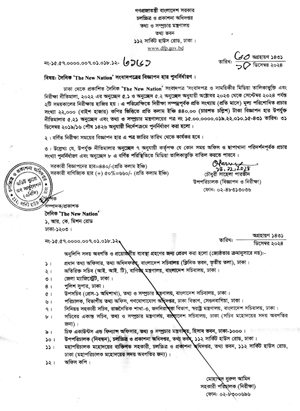M. M. Ashaduzzaman Nour :
Administrative structure of Turkey can best be explained by centralization dominated view. In this context, central administration refers to the dependency of decision making process to the central government and to the decisions being made by the centre.
The centralist structure of Turkish administration is inherited from the Ottoman Empire to Turkish Republic. Turkish Republic has been highly affected by these legacies and Ottoman Empire’s idea of centralization and strong central government.
Main feature of this inheritance have been the strong centralized government with the control over the society and economy and the dominance of the center over the periphery. Therefore, it can be said that Western understanding of administration is not highly developed in Turkish Republic because of the above mentioned reason.
Article 123 of 1982 Turkish Constitution introduces the principle of decentralization as a basis for the organization and functioning of local administrations as well as principle of centralization which refers to the organization of central government.
In other words, Turkish Constitution tries to create a balance between centralized structure of public administration system and autonomous local administrations.
The Article 123 states that the public administration should function in unity and coherence in order to maintain the integrity of the whole body of national administration including provincial and local ones. The idea of creating a balance between highly centralized government and autonomous local administrations causes a duality in Turkish public administration.
Although there have been some attempts by politicians to strengthen local governments, Turkish public administration is still very centralized. Because of this duality, it is easier for us to analyze Turkish structure of public administration in two parts; administration in central level, and administration in local level.
Administration in central level consists of three branches that represents the three branches of government which are legislation, the executive and the judiciary. However, Turkish public administration is under the influence of executive branch which includes Presidency, the Office of the Prime Minister, the Cabinet, ministers and consultative agencies.
The President is the head of state and used to be elected only once for 7-year term by the parliament. However, after the constitutional amendments in 2007, the presidents now are elected for a 5-year term by direct popular elections. Addition to that, with the constitutional amendments in 2017 there has been a shift from parliamentary system into some sort of a semi-presidential system in Turkish political structure.
The Council of Ministers, including the Prime Minister, represents the political wing of executive branch and it determines and implements general policies of the government and public administration. Although, each ministry is located in Ankara, they have the units in the provinces serving on their behalf in a hierarchical organizational structure that creates the local level of public administration.
For administrative purposes, Turkey is divided into 81 provinces (Il) on the basis of geographical situation, economic conditions, and public service requirements. Provinces are the main administrative units for central government activities and they are headed by provincial governors (Vali).
Yet, each ministry has a provincial and/or regional director of its provincial or regional ?eld organization. The provincial governor also has the authority and responsibility for the supervision of the “?eld organizations” of each ministry. Provinces are further divided into districts (Ilçe), headed by the sub-governor (Kaymakam). This makes the role of provincial governors role crucial since he/she has the duty of controlling and coordinating the activities of central government in local administrations.
However, on the local level of administration, there are not only branches of central administration, but also autonomous local administrations as well as functially autonomous local bodies such as universities, Turkish Radio and Television Corporation (TRT) and state economic enterprises.
Autonomous local administrations consists of municipalities that can be categorized as metropolitan municipalities (Büyüksehir Belediyesi), district municipalites (Belediye), special provincial municipalities (Il Özel Idaresi) and villages (Köy). Role of these municipalities is to provide public services for special needs of local communities with their semi-autonomous budgets revenues and their own legal personalities.
Although local administration might seem like they are autonomous decentralized units, they are under the strict control of central government exercised through power of tutelage. In order to protect the “administrative integrity”, central government uses hierarchical audit, which refers to an audit based upon a superior-subordinate relationship between the units or the people within the same legal entity (state).
For example, the relationship between governor and district governor is hierarchical that are involved in state legal entity. The governor can interfere in the affairs and decisions of district governor due to the fact that the district governor ranks under the governor.
Minister of Interior Affairs has the same rights on the governor. This means that, local governments under the strict control of central government via administrative tutelage audit. Central administration keep the local governments under supervision in order to prevent the authorities which it gave to local governments from being used acting contrary to law rules and general interests, unity and integrity of state, and in order to provide a harmony in state services.
(The writer is a PhD Researcher, Department of Political Science and Public Administration, Istanbul Medeniyet Üniversitesi, Istanbul, Türkiye, Assistant Professor, Department of Public Administration, Bangladesh University of Professionals).




